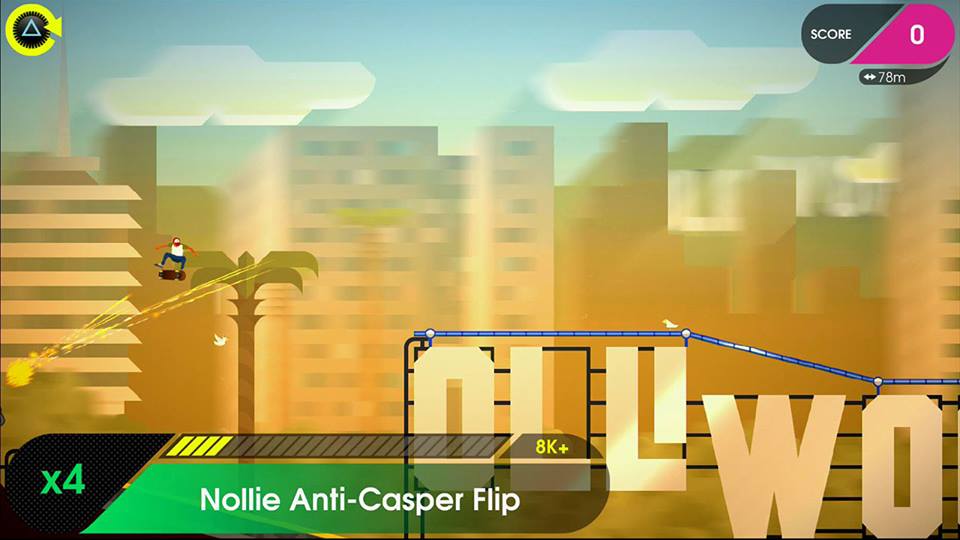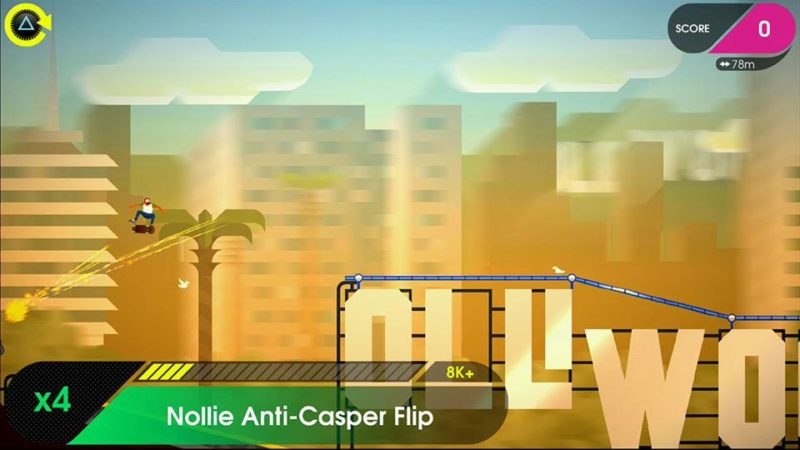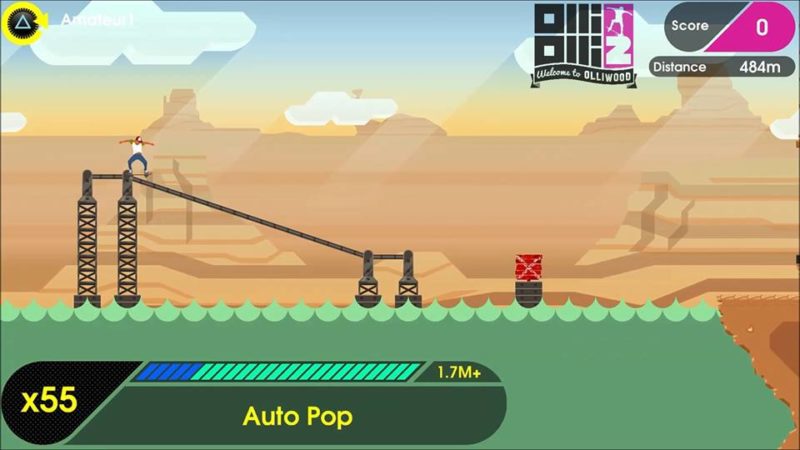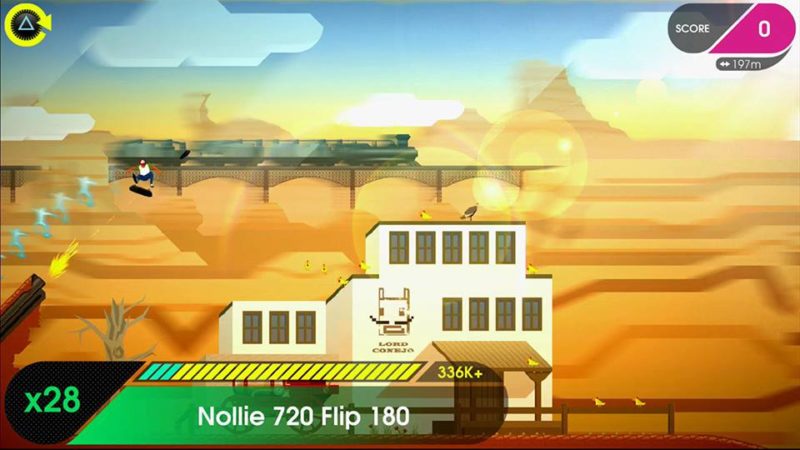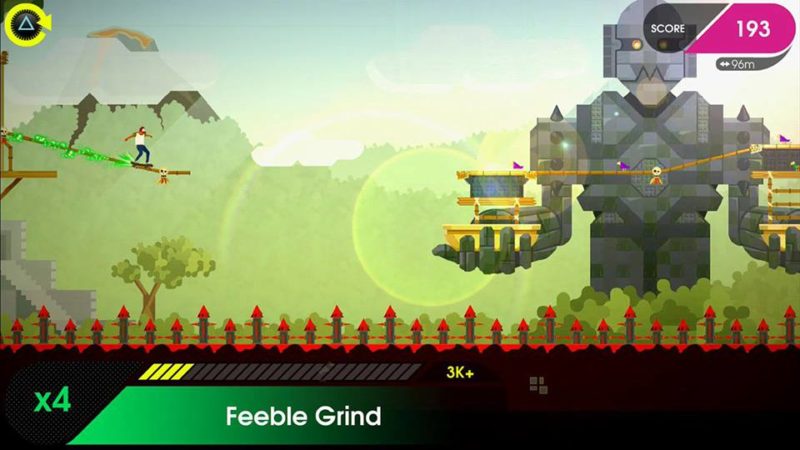TL;DR
OlliOlli 2: Welcome to Olliwood transforms the endless runner formula into a surprisingly deep 2D skateboarding simulator. It demands precise timing for tricks, grinds, and maintaining momentum, offering a steep but incredibly rewarding skill curve. With visually upgraded stages and smoother animations, it's a challenging yet fair game that makes you feel like a skateboarding master. Fancy giving your thumbs a workout and experiencing pure flow? Dive into the full review to see why this indie gem is a must-play.
Following a protracted winter, spring has finally arrived in Sweden, offering an opportune moment to embrace the outdoors. What better way to celebrate than with some skateboarding, virtually, on the Playstation Vita, in the form of OlliOlli 2: Welcome to Olliwood?
The concept of continuous forward motion is central to the endless runner genre, a sub-genre of platform games. In these games, the on-screen character perpetually runs, typically from left to right. Players are relieved of the responsibility of forward movement, allowing them to concentrate on precisely timed jumps or slides. Timing is paramount, and obstacles are a given. Many titles incorporate rhythmic elements, while others integrate endless running as mini-games, as seen in Rayman Legends.
The connection between endless runners and a sports game might seem tenuous. However, in this case, the link is fundamental. OlliOlli2 shares the core mechanics of the genre: constant forward motion, a goal-oriented structure, and a reliance on precise timing and reflexes. Disguised as a skateboarding game, it could be described as an “endless skater,” were it not for the fact that its challenging tracks actually possess a defined endpoint.
The Ollie, a fundamental skateboarding trick involving a vertical jump, is one of the first skills a skater learns. It serves as the foundation for more advanced maneuvers, from ramp skating to grinding and flat ground tricks. Proficiency in performing an Ollie is crucial in OlliOlli 2, a 2D game that demands well-timed jumps to navigate the levels. By holding down the left analog stick, the player charges the Ollie, releasing it to execute the jump. This control scheme required an adjustment period, as prior experience with the Tony Hawk series instilled a muscle memory for using the X button for jumps. However, with practice, the stick-based control becomes intuitive.
Executing an Ollie is merely the initial step. By manipulating the stick and pressing various buttons, players unlock increasingly complex tricks. Linking these tricks through grinds on rails, benches, and other surfaces is key to achieving high scores.
Momentum management is also critical. Unlike simpler endless runners, the skater’s speed in OlliOlli 2 gradually decreases unless maintained by using the X button to push off the ground. Speed also diminishes during extended grinds due to friction. Mastering downhill runs and building momentum are essential for clearing longer jumps. Regaining speed between tricks is a prerequisite for executing extended combinations, preventing jumps from becoming too short to link grinds. Advanced players can even link air and rail tricks with manuals on the ground to further extend their trick chains.
While the game mechanics initially present a challenge, they ultimately prove rewarding. The progression from tentative first attempts to mastering the skateboard and linking complex trick combinations while maintaining speed is demanding yet gratifying. Few games offer such a tangible sense of skill development. Beneath its seemingly simple gameplay lies considerable depth. OlliOlli 2 caters to a range of players and ambitions. Those seeking a casual experience can enjoy it as an entertaining endless runner, focusing on completing levels without crashing. More ambitious players can strive for high scores or complete specific missions on each track. Each completed mission awards a star, and players aiming to collect all stars will face a significant challenge requiring dedication and perseverance.
OlliOlli 2 builds upon its predecessor, released almost exactly a year prior. The graphics have been enhanced, making the stylized 2D backgrounds, reminiscent of Los Angeles and film themes like science fiction, the Wild West, and zombie horror, visually appealing. The skateboard trick animations have been refined with twice as many frames, resulting in smoother transitions, and the physics have been fine-tuned for a more polished and fluid experience. The result is an engaging game that presents a fair and sometimes intricate challenge, but always remains within reach. Frustration may arise during particularly difficult sections, but failure is attributable to player error, not the game’s design. The controls and camera function flawlessly, as expected in a classic 2D setup. This two-dimensional precision, combined with a well-balanced difficulty curve, encourages repeated attempts. Before long, numerous attempts have passed, and time has seemingly accelerated, akin to a stressful weekday morning rush. While this may also reflect a lack of morning routines, it is intended as a compliment to OlliOlli 2, a concise indie title that is easy to pick up and can make any mundane commute more enjoyable!
OlliOlli 2 is also available for Playstation 4. It can be downloaded at no extra cost for those who have Playstation Plus during the next few weeks.
